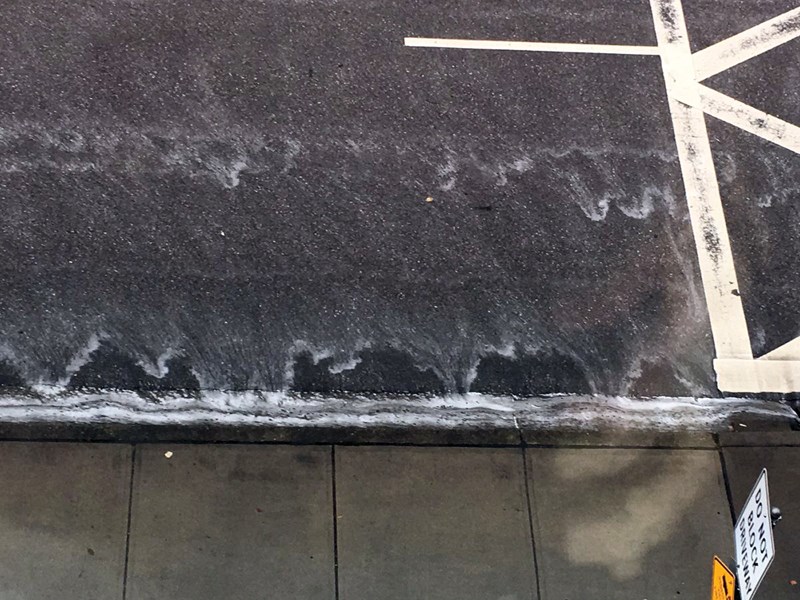What is that wet stuff falling from the sky and, even more confusingly, what is that milky white stuff running on the ground?
Drivers across the Lower Mainland were greeted by a welcome bout of rain on Sept. 8, the first heavy downpour after a long, dry, hot and smoky summer. The rain, however, brought with it an unusual phenomenon: a mysterious, foam-like milky substance that was flowing down the streets and leading to slick driving conditions.
I was walking to work that day and saw the milky stream flowing down a busy section of Third Street in North Vancouver. My first thought was that it looked like a car wash had exploded somewhere up mountain and was raining suds down on the city.
When I arrived at work I had the answer, provided by the good folks at Port Moody Fire and Rescue.
“The white milky substance you see on the roads is a result of fresh rain and oil-soaked roads – this is a natural reaction,” the helpful department wrote in a Twitter post accompanied by a foamy photo. “As a result, streets are extremely slick. Please drive with care and add extra distance for stopping.”
Milky mystery solved.
The downpour, however, offered a slick reminder about the dangers posed by driving in the rain, particularly after long dry spells. It’s a common pattern on the Lower Mainland in September and October, as sunny summer skies hang around, broken by periodic sprinkles rather than the sullen soaker hose of winter. Those isolated rains can be more dangerous than the steady downpours that will come later in the year.
A 2003 study from UC Berkeley concluded that the risk of an accident on a rainy day increases with the length of the dry spell preceding it. Daniel Eisenberg, the researcher who conducted the study, pointed out two likely explanations.
“Oil and debris accumulate on the road when it hasn’t rained for a while, making the roads slicker when it first starts to rain,” he said. “By the second day of rain, the oil and debris have washed off the roads and are less dangerous. Another factor could be that people aren’t as used to driving in the rain when it comes after a long dry spell. Perhaps they become better adapted to the weather conditions by day two or three.”



